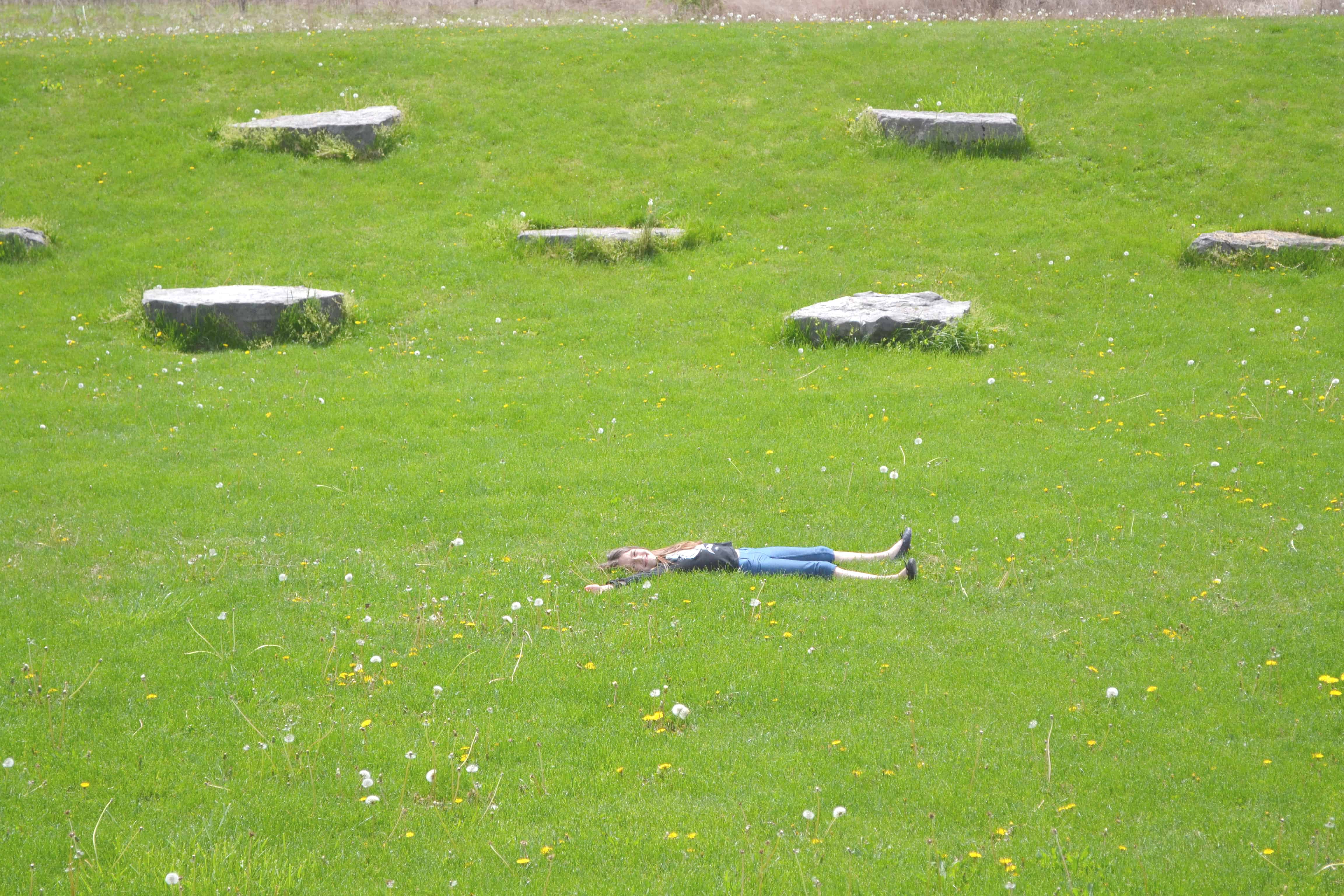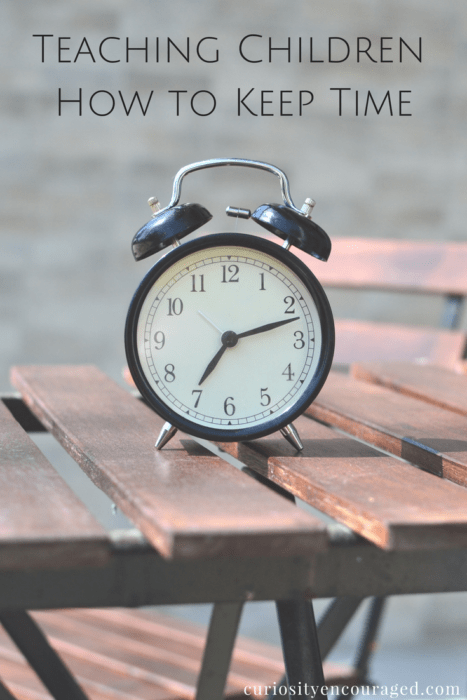Disclosure- Links in this post may be affiliate links. If you click through and make a purchase, I earn a commission at no additional cost to you. Unless noted, if I am reviewing a product, I have been compensated for my time. I write honest reviews. They are not required to be positive. I only recommend the resources we love and use.

“How long can I lie here?” Time well spent!
My youngest wants to know how to tell time. We practice by playing a clock game she enjoys, rotate paper hands around a cardboard clock she’s made, determine which number is being called forth by the little hand. It’s a milestone, learning how to tell time, like tying shoes and learning how to read. She’s ready for a watch. It occurs to me, though, that while reading a clock is an important skill and a watch will help her continue to practice, it’s not nearly as important as keeping time. Teaching children how to keep time, that’s a life skill that takes practice.
My children ask how long it will be until we’ll have the meal I have yet to start. I add up the minutes I think everything will take and tell them to be home by six.
We have errands to run and somewhere we need to be at 2 pm. I think I can squeeze it all in. We’re late again.
I look at my to-do list and try to visualize how long each item needing my attention will take. I shift the items around, make time for some, put others off until there is more time.
Timekeeping involves understanding the space between the numbers. It taps into intuition and prior knowledge. It creates boundaries and allows for more of what many of us are seeking, time.
The writing circles I facilitate pay close attention to the practice of timekeeping. We set timers, give equal time to each writer, invite each other to watch our time, decide how we want to spend it and make sure each voice has an opportunity to be heard.
Bells keep time in school, time cards and invoices track hours, alarm clocks remind us to get up. Calendars, watches, lists, schedules, rhythms- so many tools help keep time. But they are only useful if we pay attention. If we use them. I can set my alarm clock for 5 am and still rise at 7 am. I can buy a pretty planner and keep it in a drawer.
We have to become timekeepers if we want to keep time, and if we want to help our children use time well, we must help them practice.
How to Help Children Become Timekeepers
Use a Family Calendar-
A paper, whiteboard, or online calendar posted places where children can access it encourages everyone to organize and keep track of their days. Small children can practice tracking their days on a magnetic calendar like this one by Melissa and Doug (affiliate link-no extra cost to you- thanks!).
My eleven year old recently started using Google calendar. We connected his calendar with our Google family calendar so he can see what is coming and what days have space for him to add the many gatherings he likes to plan.
Enlist a Timekeeper-
Once a child knows how to tell time, maybe even before, they can help manage and keep track of time. A year or so ago, my son, frustrated that our family was running late, was excited when I asked him to help me take on the challenge of keeping time. He is now rarely seen without a watch. He takes his job as timekeeper seriously, and it’s nice to have help!
Now, when I’m preoccupied and time needs to kept, he reminds me we need to get going. His watch also allows him to keep track of how much time he has to play at the neighbor’s before he needs to head home and if there are enough minutes to take a bike ride, build a fort, or begin a new game.
Review Your Family’s Schedule-
The more a family talks about what is happening or needs to happen, the more children feel and understand how much time a day holds and how much can realistically fit within the timeframe. My family often uses meals to touch base about who is doing what when or what needs to be remembered so we don’t run behind. The more we talk about the necessary structure of our day, the more my children are able to anticipate how much time they need to be ready for what’s ahead.
My family often uses meals to touch base about who is doing what when or what needs to be remembered so we don’t run behind. The more we talk about the necessary structures of our day, the more our children are able to anticipate how much time they have and need to be ready for what’s ahead.
Help Children Use a Planner for More Than Just School Work-
Planners are great tools, especially when kids have a lot they have to remember. But let’s be honest, keeping track of homework, while useful, is not very fun. Kids are motivated by fun. Encourage children to also list the things they want to do. Once a week or if needed every day, sit down with your child and use their planner to also list out all the fun things they get to do. When they look at their planners and see Soccer, Sleepover, Play Minecraft, or whatever it is they are interested in, they’ll be more likely to want to use their planners and plan their day.
Ask for Help-
Children want to be helpful and it’s in their best interest. A parent who is trying to do it all is usually pretty cranky. But they need to know their help is wanted and needed. We have to ask for help and explain why we need it.
My children aren’t huge fans of grocery shopping but they know the result; they’ll enjoy the food we buy, and the chore will get done faster if they help. Sometimes they each grab a cart and piece of the list. We spend less time in the store, which means more time for them to do something they’d rather be doing with a snack in hand.
Aside- At first, a child’s help means things take more time, but once they practice the skill, like any of us, they find their rhythm and become more efficient. Helping them practice life skills, contribute to their family, and eventually become a real help is worth the extra time it initially takes.
Create a Family Rhythm–
A certain time of day where everyone knows what to expect- pack backpacks, make lunches, tidy up, take a bath- helps keep time. Routine makes it easier for everyone to remember what needs to be done. Time is used well instead of being spent on figuring out what should be done and who should do it. Planning out a rhythm helps us feel like time is on our side instead of there never being enough.
Timekeeping is a practice, but it is an important one, and it’s a life skill that will help children, as they grow, manage and intentionally create their days. Days that feel spacious instead of rushed, are typically days that are a lot more enjoyable. Help children learn how to tell time and then help them learn how to keep it.


















Pingback: In December - Curiosity Encouraged
Pingback: Simple & Fun | Things to Do With Kids When You're Home All Day -
Pingback: Choosing a Homeschool Curriculum for 4th, 5th, and 6th Graders
Pingback: Choosing a Homeschool Curriculum- Early Elementary -